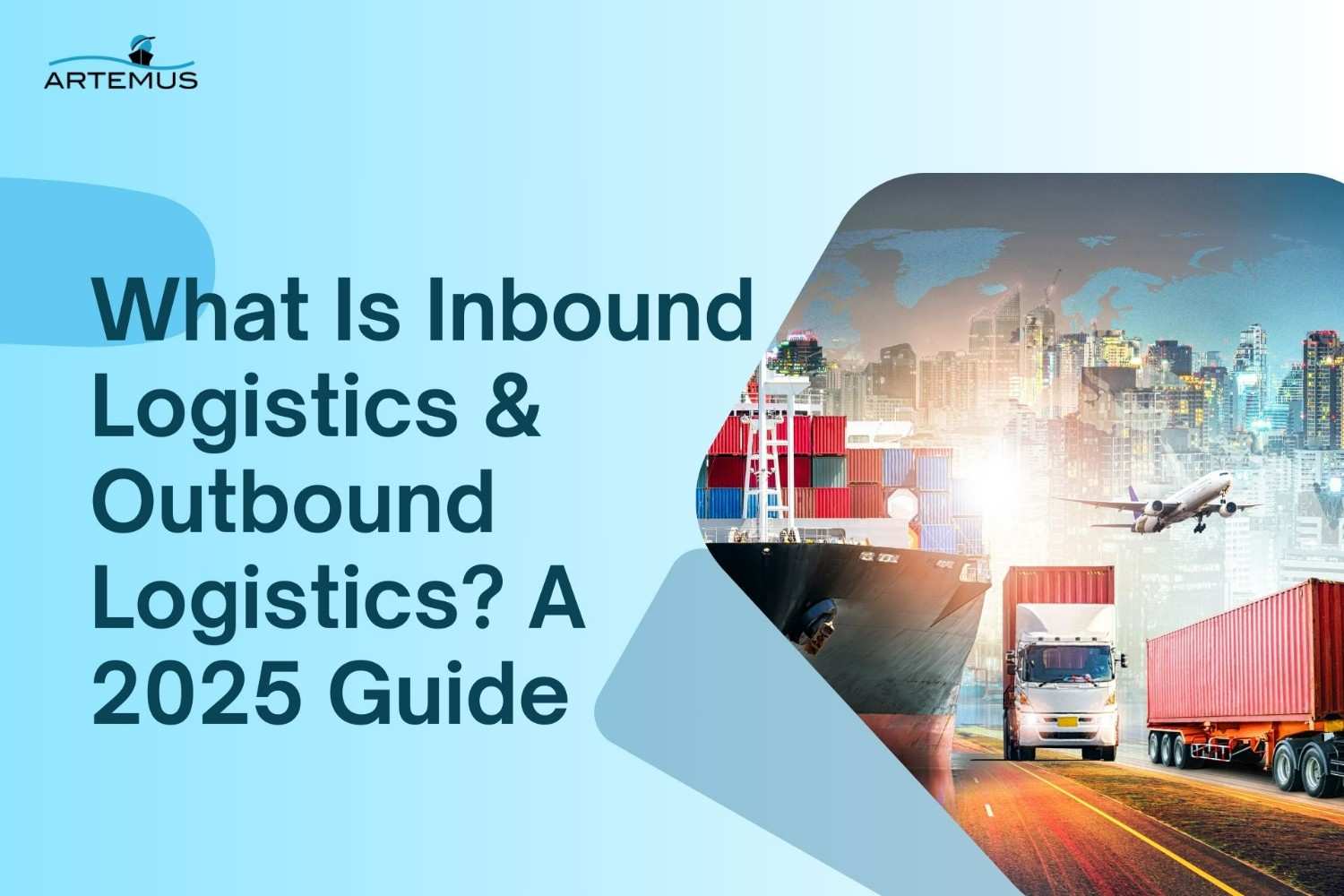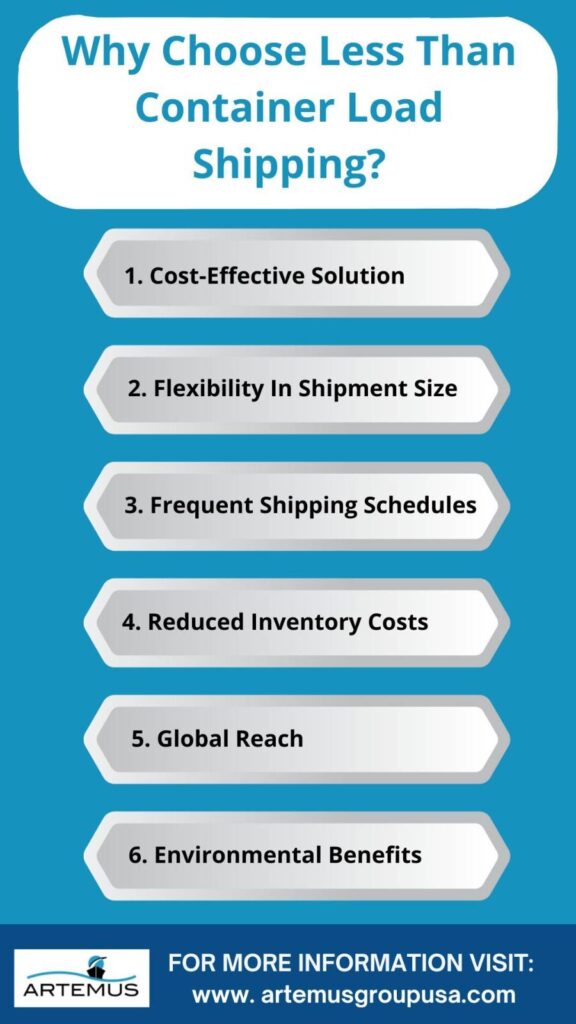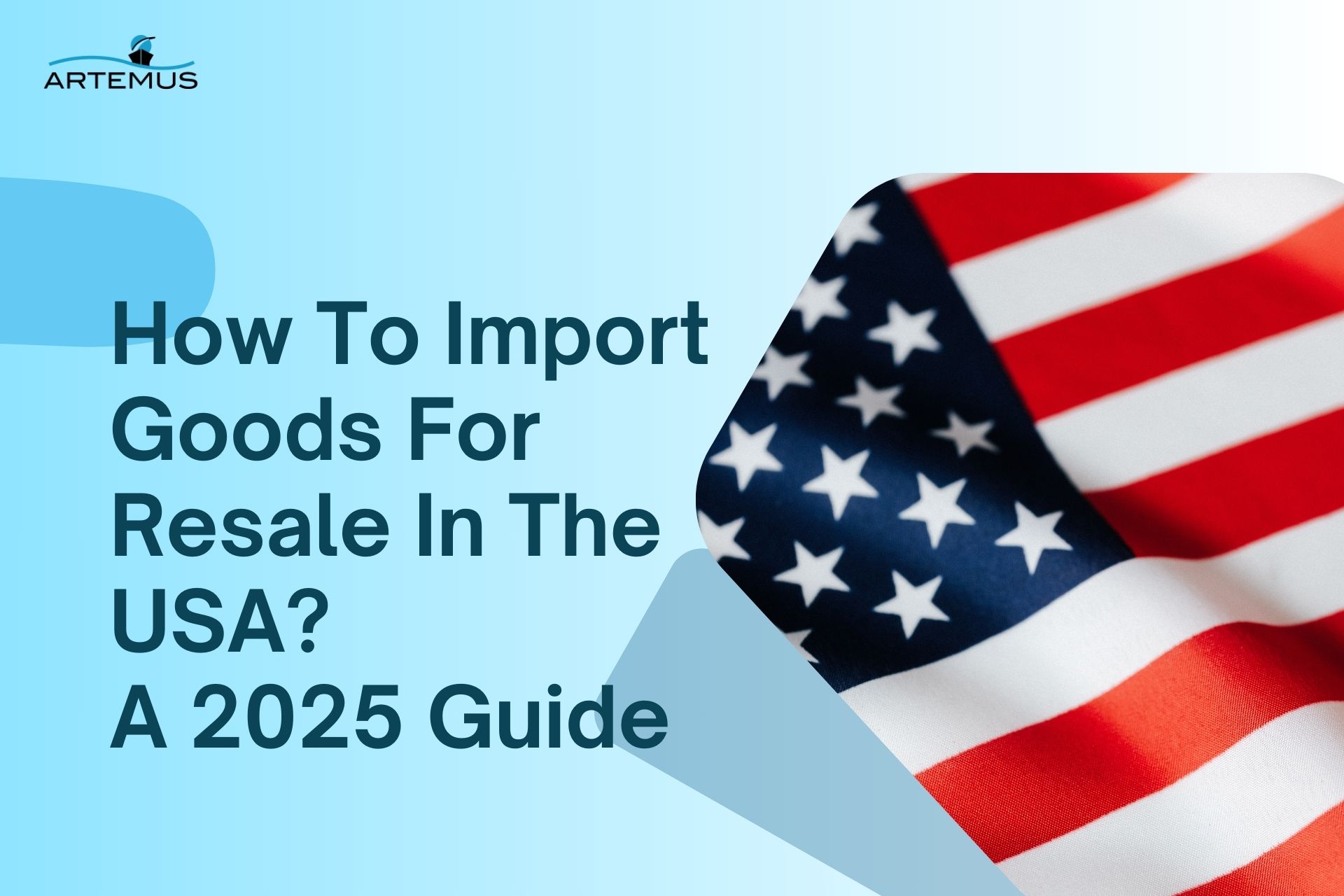
What Is Inbound Logistics & Outbound Logistics? A 2025 Guide
In the dynamic world of supply chain management, understanding the nuances of inbound and outbound logistics is crucial for operational

When shipping goods internationally, finding the most efficient and cost-effective method is crucial. Less Than Container Load (LCL) shipping offers a flexible solution for businesses that don’t need a full container but still want to move their cargo safely across borders.
LCL allows multiple shipments from different shippers to be consolidated into one container, reducing costs while ensuring timely delivery.
At Artemus, we simplify this process with our comprehensive AMS and ISF solutions, ensuring seamless customs compliance. Additionally, you can request a domestic transportation quote with Artemus, making your logistics experience even more streamlined.
Table Of Contents
Less Than Container Load (LCL) is a shipping term used when a shipment doesn’t require a full container to transport goods. Instead of paying for an entire container, businesses or individuals can share space within a container with other shippers.
This method is particularly beneficial for small to medium-sized shipments that don’t fill an entire container, making it a cost-effective and efficient option.
In an LCL shipment, multiple consignments are consolidated into one container, allowing each shipper to pay only for the space their cargo occupies. The cargo is grouped based on destination, ensuring that it reaches its final location efficiently. This method also enables shippers to send smaller quantities of goods without the need to wait until they have enough to fill a container.
LCL shipping is widely used in international trade, providing flexibility and reducing overall transportation costs. However, it involves some complexity, such as coordinating with other shipments and ensuring proper documentation.
Working with a reliable logistics provider can help you navigate these challenges, ensuring your cargo reaches its destination safely and on time.
Related: Full Container Load Meaning (FCL) & Key Considerations

When it comes to international shipping, businesses often face a choice between Full Container Load (FCL) and Less Than Container Load (LCL) options.
While FCL may be ideal for large shipments that require an entire container, LCL offers distinct advantages for those with smaller cargo volumes. Here’s why you should consider choosing LCL shipping:
LCL shipping allows you to share container space with other shippers, meaning you only pay for the space your goods occupy. This makes it a budget-friendly option, especially for small and medium-sized businesses that don’t have enough cargo to fill a full container. You can allocate resources more efficiently by avoiding the cost of a full container.
With LCL, you can ship smaller quantities without waiting to accumulate enough goods to fill an entire container. This flexibility means you can respond more quickly to market demands or customer orders, reducing lead times and keeping your supply chain agile.
LCL services typically offer frequent sailings, allowing you to ship your goods regularly. This can be particularly beneficial for businesses that need to maintain a steady flow of inventory or want to avoid the long wait times associated with FCL shipments.
Since LCL allows for smaller, more frequent shipments, you can maintain lower inventory levels, reducing storage costs and minimizing the risk of overstocking. This lean approach to inventory management can lead to significant savings and improved cash flow.
LCL shipping is available to and from a wide range of global destinations, providing access to international markets without the need to ship large volumes. Whether you’re importing goods from Asia or exporting to Europe, LCL makes it easier to reach new markets and expand your business globally.
Sharing container space with other shippers reduces the number of containers on the move, contributing to a smaller carbon footprint. LCL shipping is an eco-friendly option that aligns with sustainable business practices, helping to reduce the environmental impact of your logistics operations.
Related: Merchandise Processing Fee (MPF): A Complete Guide
Here are some important statistics related to Less Than Container Load (LCL) shipping:
Source: (maersk.com, Globalia Logistics Network).
Related: Understanding Roll-On/Roll-Off Ships: A Complete Guide
Less Than Container Load (LCL) shipping rates in 2024 are influenced by several factors, including market trends, geopolitical tensions, and technological advancements.
1. Market Trends: The supply-demand balance in the shipping industry is currently tilted, with supply outpacing demand. This situation has resulted in generally lower shipping rates across the board. The Drewry Supply/Demand Index forecast for 2024 stands at 74.3, indicating one of the lowest levels ever reported.
This suggests that LCL shipping rates may remain relatively low, offering cost advantages to shippers who do not require full container loads.
2. Geopolitical & Environmental Factors: The global shipping industry is increasingly affected by climate change and geopolitical tensions, which can disrupt supply chains and impact shipping routes. These disruptions may lead to fluctuations in LCL rates, especially in regions prone to such events.
For instance, low water levels in critical waterways like the Panama Canal have already affected container traffic, which could lead to increased costs in certain areas.
3. Technological Advancements: The digitization of shipping processes is another significant trend. Investments in digital platforms and the adoption of smart containers are expected to improve efficiency and reduce costs over time.
Although the widespread use of smart containers is still a few years away, their gradual implementation could lead to more predictable and potentially lower LCL rates in the future.
4. Sustainability Efforts: As the industry moves towards more sustainable operations, there may be an impact on shipping costs. The willingness of consumers and businesses to absorb these costs will determine how they influence LCL rates.
Companies that prioritize sustainable logistics might see a slight increase in costs, which could be reflected in shipping rates.
Overall, LCL shipping in 2024 is characterized by competitive rates due to oversupply, but shippers should stay informed about environmental and geopolitical factors that might affect specific routes and costs.
For the most accurate and up-to-date rates, it is recommended to consult with logistics providers or use rate comparison tools.
Related: Customs Clearance Delays In 2024: Top 10 Reasons & Solutions
The cost of Less Than Container Load (LCL) shipping varies depending on several factors, including the shipping route, the volume and weight of the cargo, the type of goods, and any additional services required, such as customs processing or cargo insurance.
Base Costs: LCL shipping typically involves paying for the space your cargo occupies within a shared container. Charges are calculated based on the volume (cubic meters or cubic feet) or weight (whichever is greater) of your goods. The base rate for LCL shipments can range from $50 to $100 per cubic meter, though this can vary widely based on the specific trade lane.
Given these variables, a typical LCL shipment might cost anywhere from a few hundred to several thousand dollars, depending on the specifics of the shipment.
Related: What Is Harbor Maintenance Fee (HMF)? A 2024 Guide
Securing the best rates for Less Than Container Load (LCL) shipping requires strategic planning and an understanding of market dynamics. Here are some expert tips to help you achieve competitive pricing:
Related: What Happens After Custom Clearance Completed? 9 Next Steps
When it comes to international shipping, understanding the difference between Less Than Container Load (LCL) and Full Container Load (FCL) is essential for making the right logistical decisions.
Both methods offer distinct advantages depending on the volume of goods you’re shipping and your specific business needs. Here’s a closer look at the key differences between LCL and FCL:
Related: NVOCC Bond & OTI Bonds – Federal Maritime Commission
Less Than Container Load (LCL) shipping is a popular choice for businesses that need to transport smaller quantities of goods without the need for a full shipping container.
Here’s a closer look at how LCL shipping works and what makes it a valuable option for many shippers:
In LCL shipping, cargo from various shippers is combined into a single container.Each shipper only pays for the space their goods occupy, rather than the entire container. This consolidation process is managed by a freight forwarder or consolidator who groups different shipments together based on destination and other criteria.
Once cargo is consolidated, it is carefully packed into the container to maximize space and ensure safety. Each shipment is accompanied by its own set of shipping documents, including a bill of lading and packing list. These documents are essential for tracking the cargo and facilitating customs clearance.
The consolidated container is then transported from the port of origin to the destination port. During this journey, the container may make several stops or transfers, depending on the shipping route and logistics involved. Throughout the journey, the cargo is handled with care to prevent damage or loss.
Upon arrival at the destination port, the container is unloaded and the cargo is deconsolidated. The individual shipments are separated and prepared for delivery to their respective recipients. Each shipment goes through customs clearance, with the necessary documentation provided to comply with local regulations.
Once customs clearance is complete, the cargo is delivered to the final destination. Depending on the arrangement, this might involve further transportation by truck, rail, or other means to ensure that the goods reach their intended location.
Related: How Does Freight Forwarding Work? A 2024 Guide
Less Than Container Load (LCL) shipping is a popular choice for businesses looking to optimize their logistics, especially when they don’t have enough cargo to fill an entire container.
While it provides several advantages, it also comes with certain disadvantages that should be considered. Here’s a closer look at both sides of LCL shipping
Related: Ocean Freight Documentation For Imports: A Crucial Checklist
Artemus offers advanced freight forwarder software designed to streamline ISF (Importer Security Filing) and AMS (Automated Manifest System) filings. Our platform provides a comprehensive solution for managing the complex documentation and compliance requirements associated with international shipping.
By automating and simplifying these critical processes, Artemus ensures accuracy, efficiency, and timely submissions, allowing freight forwarders to focus on delivering exceptional service.
With our software, you can seamlessly integrate ISF and AMS filings into your operations, enhancing overall productivity and reducing the risk of compliance issues.
Related: What Is Import Compliance & Why It Matters?
There is no strict minimum weight for Less Than Container Load (LCL) shipments; however, most shipping lines prefer a minimum of around 100 kilograms (220 pounds) to ensure cost-effectiveness and efficient handling.
LTL (Less Than Truckload) and LCL (Less Than Container Load) are shipping methods used for transporting goods that don’t fill an entire truck or container, respectively. LTL refers to partial truck shipments within the same country, while LCL pertains to partial container shipments across international borders.
The capacity of an LCL (Less Than Container Load) container varies depending on the combined volume of the cargo being consolidated, but it typically ranges between 1 to 20 cubic meters or more, depending on the needs of the shippers involved.
Container status LCL (Less Than Container Load) means that the cargo is part of a shared container with goods from other shippers, allowing for cost-effective shipping without requiring a full container.
In conclusion, Less Than Container Load (LCL) shipping provides a practical and economical solution for businesses with smaller cargo volumes, allowing them to share container space and reduce costs. By leveraging LCL, shippers can enjoy flexibility and efficiency in their logistics operations.
At Artemus, we support your LCL shipping needs with our robust AMS and ISF solutions, ensuring smooth compliance and seamless processing. Contact us today for a domestic transportation quote and experience a streamlined approach to international shipping.

In the dynamic world of supply chain management, understanding the nuances of inbound and outbound logistics is crucial for operational

In today’s interconnected world, businesses rely heavily on global trade to expand their markets, access new resources, and drive growth.

Importing goods for resale in the USA presents a lucrative business opportunity, but navigating the complexities of U.S. customs regulations,
Get In Touch
Artemus’ Software Solutions for ISF, AMS, Japan AFR, eManifest Canada, & Panama B2B filings.